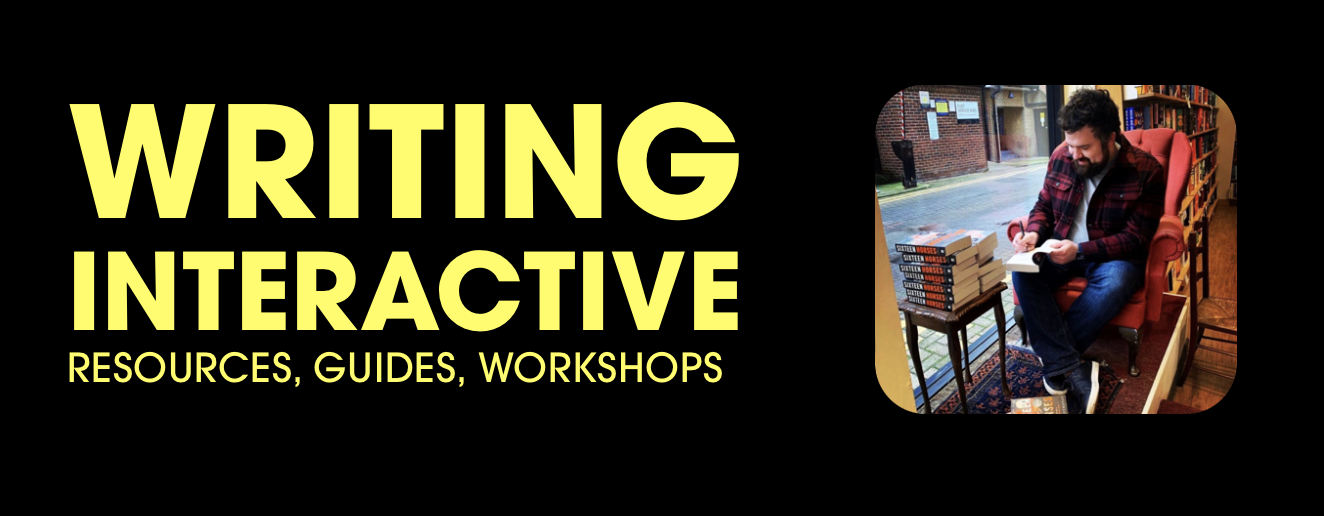The basics of Twine and Ink
To start creating narrative games, you only need to know the information on this page and use these free tools.
-
When you create a new Twine project, you’ll already have a passage in which you can write the starting text for your game. See step 2 below on how to automatically create new passages with choices. You can also click +Passage in the Twine UI.
-
In your passage, writing [[“insert choice here”]] with the brackets either side will create a link to a passage of that same name.
So if I write [[Updog]], there will be a clickable link labelled Updog in my game.
If I haven’t created any passage or text for this choice yet, then doing the above will automatically create it in Twine - so if I exist my passage, I should see Updog waiting for me.
So:
The king died.[[The queen was upset]]
[[The queen was delighted]]
Would be a viable start to an interactive story. The two options at the bottom would be clickable entries that, if the player selected one, would represent a branch in the story.
-
Actually, it doesn’t. You just have to do 1-2 above. Sure, Twine allows for more complicated behaviours, but the core of a great interactive experience is entirely possible with just this.
-
Once upon a time...
* The king died. -> kingdied
* The queen died -> queendied
=kingdied
Everyone was happy, yay
-> END
=queendied
Everyone was sad, boo
-> END
-
In step 1’s example, clickable choices are created by putting an * asterisk at the start of a line along with a -> to point towards the name of the section you want the choice to point to.
New sections are denoted by lines beginning with = an equals sign.
When you want the game to end, put -> END at the bottom of the final sections. This will mean those sections will finish the game.
So, the following symbols are all you need to know:
* Choices
-> redirect
= to sections
until they
-> END
-
Again, it doesn’t. You just have to do 1-2 above. As with Twine, Ink allows for far more complicated behaviours, but the core of a great interactive experience is entirely possible with just this.
Want more guidance?
Sign up for free to receive:
- Tuesdays: weekly digest of game narrative opportunities
- Thursdays (alternating): game recommendations and original Substack articles/opinion pieces
- ‘The Apartment Dialogue’ interactive writing exercise PDF, available exclusively for subscribers.
